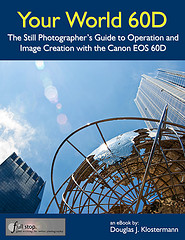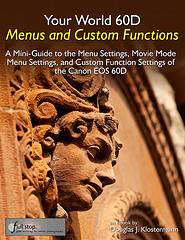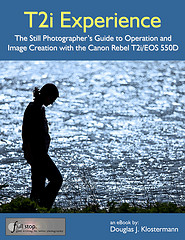The latest in the Canon Powershot G series, the Powershot G1 X was recently announced, and should be available in February 2012. I wrote a bit about what new features it offers compared to the G12, namely a much larger CMOS sensor and a different lens to go with it. The G1 X is not a replacement to the G12, but rather is a new, even higher-end compact with manual controls, designed for dSLR users who want a very high quality point and shoot for various situations, as well as for dedicated enthusiasts who want the quality and manual control of a dSLR but don’t want the size, weight, and bulk of a dSLR body and lenses. The G1 X should prove to be a very popular camera for many demanding photographers for both everyday and travel use.

image courtesy of Canon USA
If you are trying to decide between the new G1 X and the older G12, the most important consideration (besides the price difference) is the sensor/ lens/ Digic V processor combo. While not quite as large as the ASP-C sensor of a dSLR like the T3i or 60D, the 18.7mm x 14mm, 14 megapixel sensor of the G1X is six times larger than that of the G12, and thus promises to offer not only higher image quality, but also much improved low light performance. Its f/2.8 maximum aperture at the wide end coupled with the larger sensor will also allow a larger degree of background blurring for portraits, etc. While you shouldn’t expect the degree of out of focus areas (bokeh) as a dSLR due to the minimum aperture becoming f/5.8 at the telephoto end, it will be somewhat improved over what the G12 or other compacts can offer. The 4X zoom lens of the G1 X also does not have quite the reach of the 5X zoom lens of the G12.
Other possibly important differences between the two are the camera size and weight and the battery life. While the G1 X is larger and heavier than the G12, it uses a smaller batter with a shorter shot life (see below for details). The G1 X also offers a high speed burst of continuous shooting, 4.5 fps for up to 6 shots at full quality, or 1.9fps for unlimited continuous shots.
The controls of both cameras are very similar, with some minor tweaks made to the G1 X. The G series is prized by demanding photographers because it offers quick and easy access to many manual controls, similar to a dSLR, as well as a viewfinder. Both cameras have a mode dial to quickly change shooting modes, an exposure compensation dial for quick EC adjustments, and button access to autofocus modes, metering modes, flash, as well as exposure lock. The G1 X looses the ISO dial of the G12, but places it on the rear control dial for relatively easy access. The G1 X however adds a movie record button for rapid start of movie recording in any shooting mode. As a result of these changes, the AE-L button is moved lower, and the self-timer and manual focus functions no longer have dedicated buttons, but can be accessed in the menus.
Below is a further comparison of some of the key specs of each camera:
Canon G1 X
sensor: 14 MP, 18.7mm x 14mm sensor
lens: 28-112mm equivalent, 4X zoom lens
aperture: f/2.8-5.8 maximum aperture
rear LCD: 3″ articulating rear LCD with 920,000 dots
size: 116.7 x 80.5 x 64.7mm
weight: 534 g
processor: Digic V
RAW image file format: yes, 14 bit RAW
ISO: 100-12,800
exposure compensation: +/- 3 EV at 1/3 stops
continuous shooting: 4.5 fps for 6 shots
metering: Evaluative, Center-weighted, Spot
flash: internal pop-up plus hot-shoe for EX Speedlites
battery: NB 10L – 250 shots
video: up to 1920 x 1080 @ 24fps full HD
price: $799
Canon G12
sensor: 10 MP, 7.44 x 5.58mm sensor
lens: 28-140mm equivalent, 5X zoom lens
aperture: f/2.8-4.5 maximum aperture
rear LCD: 2.8″ articulating rear LCD with 460,000 dots
size: 112 x 76 x 48mm
weight: 351 g
processor: Digic IV
RAW image file format: yes
ISO: 80-3,200
exposure compensation: +/- 2 EV at 1/3 stops
continuous shooting: 2 fps
metering: Evaluative, Center-weighted, Spot
flash: internal plus hot-shoe for EX Speedlites
battery: NB 7L – 370 shots
video: up to 1280 x 720 @ 24fps HD
price: $395
So as you can see, the cameras are quite similar in many ways, with the exception of the sensor, lens, and processor, which is going to make a very large difference in terms of improved image quality, higher dynamic range, better low light performance, reduced noise at high ISO settings, longer flash reach, larger image size allowing for more aggressive cropping, and will allow the ability to achieve more dramatic depth of field. According to Canon:
The powerful DIGIC 5 processor in the PowerShot G1 X is able to process six times the amount of information compared to the DIGIC 4 processor used in the PowerShot G12 compact. With this vastly increased processing power advanced noise reduction is possible to provide even better image quality than the DIGIC 4-powered HS System.
The DIGIC 5 processor uses approximately four times as much information as before to resolve one pixel, with the aforementioned six times faster processing speed. For the total performance of noise and image clarity this has an effect of two stops at high ISOs compared to the PowerShot G12 compact at ISO 3200, and three stops at lower ISO.
The 14 bit RAW allows for those who shoot in RAW file format for later post-processing to capture images with more dynamic range, better noise reduction, and more shadow detail.
Most of the other features such as the viewfinder, scene modes, autofocusing systems, creative filters, movie modes, and white balance options are nearly identical on both models. The G1 X also adds improved, 4-stop image stabilization, a built in 3-stop neutral density (ND) filter, and an intelligent face detection system which will give focus and exposure priority to faces it recognizes. It also offers multi-area white balance correction so that different light sources are equally neutralized or balanced – such as the flash lit subject with the fluorescent lit background.
So, how do you decide between the two? Who is the G1 X for vs. the G12? Well, if the price difference doesn’t make up your mind for you, the G12 is for those who want a very high quality point, rugged point and shoot with manual controls and great image quality. If you are going to be viewing and sharing your photos online or on a computer screen primarily, the images from the G12 should suffice. You can still do post-processing and make small or medium size prints for the special images. It is great for everyday use and for travel.
But if you need to take it to the next level – if you need or want near dSLR quality images for more invasive post-processing, larger prints, cropping, or even publication, you will want the G1 X. If you want the ability to more easily create background blurring, and the occasional high speed burst for action shots, you will want the new model. If you want to get as close to a dSLR without the size, weight, and lenses, the G1 X (or Sony NEX-7) is the answer.
Pre-order your G1 X from B and H Photo here! – $799 – expected Feb. 2012?
Pre-order your G1 X from Amazon – $799 – expected March 31, 2010
See the Powershot G12 on Amazon – $395
The official Canon press release for the G1 X can be read on their site here.









